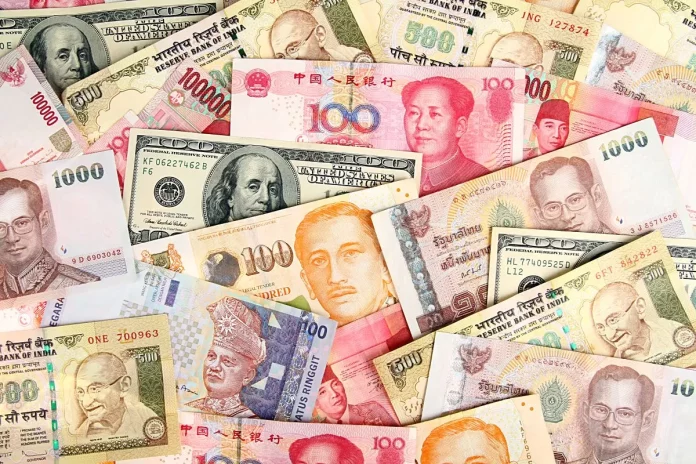Most emerging Asian currencies were trading lower on Tuesday (Aug 1) against a firm US dollar, with the South Korean won and the Chinese yuan leading losses, while investors eyed stimulus measures from Beijing to support its post-pandemic recovery.
The won weakened 0.5% and the yuan fell 0.3%.
A private sector survey showed China’s factory activity growth contracted for the first time in three months, while support measures announced by the State Council were seen short of specifics to bolster broader consumption.
The data was in line with the government’s official PMI on Monday, raising challenges for policymakers seeking to revive momentum in China’s post-Covid recovery amid high youth unemployment, mounting local debt pressure and weak demand.
“We are hoping that the government can address the excess real estate inventory, particularly in the mass market so that consumer confidence can recover,” Lorraine Tan, head of equity research in Asia at Morningstar, said in a note.
“We think specific policies to target supply are needed, and a broader-based real estate recovery in China may take through 2025.”
In South Korea, exports fell more than expected in July and at the steepest pace in more than three years, raising concerns that the downturn may drag on longer than expected.
“It could take a few months for trade to completely bottom out before making an eventual rebound,” analysts at Maybank wrote in a note.
The Japanese yen fell 0.3%. The yen’s retreat comes as investors looked past the Bank of Japan’s surprise tweak of its 10-year yield ceiling to view changes to the negative short-term rate as a still distant prospect.
Separately, the country’s factory activity contracted at a faster pace in July, taking a hit from soft orders.
The dollar index rose 0.1% as of 0512 GMT, further adding pressure on riskier Asian assets.
Indonesia’s rupiah depreciated 0.3%. Annual inflation in Southeast Asia’s largest economy cooled further to 3.08% in July, moving closer to the middle of the central bank’s target range of 2% to 4%.
The Indian rupee and Malaysia’s ringgit eased 0.1% each. The Philippine peso was the only outlier in the region as it appreciated 0.3%.
Stock markets in the region were broadly higher, with South Korea’s benchmark index climbing 1% to lead gains, Reuters reported.
Equities in Manila advanced 0.5% and China’s stocks rose 0.1%.









